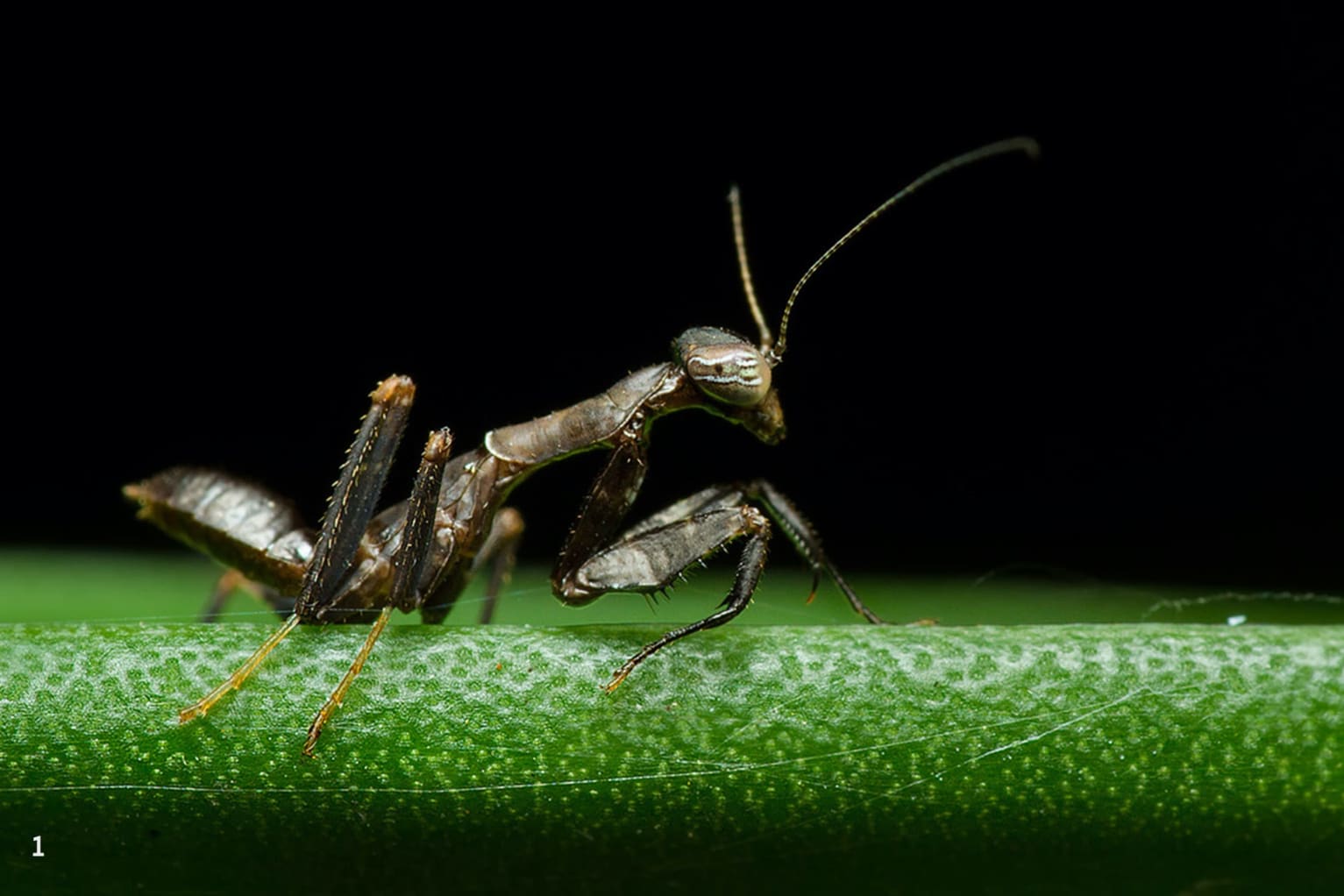 Listen to this article
•
15:34 min
Listen to this article
•
15:34 min
Praying mantises are bizarrely beautiful creatures. They stand on four stick-like legs with two enlarged legs held up in front of them. The raised front legs are the inspiration behind their name, as they look like arms held up in prayer. Two large compound eyes and three small, simple eyes sit on a triangular head that seems to have inspired popular depictions of extra-terrestrial life. All six legs and the alien-like head are attached to a lithe, sinewy body (thorax and abdomen). Many mantises even have a pair of wings that enable flight in some species. Millions of years of evolution have crafted these athletic predators into a baffling variety of sizes, shapes, colours and patterns. Their remarkable forms are aesthetically stunning and functionally sound, providing the mantis with camouflage to hide from predators and sneak up on prey.
The 184 species of praying mantises found in India do well to demonstrate the remarkable diversity in their appearances. There are tiny mantises that look like ants and large ones that look like leaves. Some look uncannily similar to the tree bark they sit on, and some even look like moss growing on a branch. In India, some unfathomable forms, like the moss-mimicking Ceratomantis ghatei, are only found in the rich forests of the Western Ghats. Some equally incredible-looking mantises, like the bark mantis and flower mantis, can be found in the middle of bustling cities like Bangalore.
If you have walked through a forest, local park, or neighbourhood garden in India, there is a good chance you have encountered a praying mantis and an even greater chance you’ve walked right past one without realising its presence. The thing I particularly like about this insect group is how they instantly spark curiosity in anyone who sees them. Despite their unfamiliar shape, to those uninitiated in invertebrates, I have seen people mostly gasp in wonder at the sight of a mantis gracefully moving and looking right back at them. Meet praying mantises, your gateway into the amazing world of insects.
(1) Praying mantises, like all insects, have six legs — two pairs of slender hind legs and a pair of powerful front legs. Despite their stick-like appearance, the four hind legs are the primary walking legs that carry the insect around, leaving the front pair of legs free to hunt. The hind legs end with the tarsi (last segment) that function like our feet, with a few bonuses. For instance, the fine hair at the end of the tarsi allows the praying mantis an impressive grip on surfaces. (2) It also permits the praying mantis (like this violin mantis ) to skillfully carry its weight while going on gravity-defying strolls. Photos: Hayath Mohammed (1), Jithesh Pai (2)
Cover photo: Hayath Mohammed
The praying mantis gets its name from the way it holds up its front legs — like hands folded in prayer. (1) These praying “hands” or “raptorial hands” are built for preying on their next meal. From its prayer position, the mantis deploys these front legs (hands) with speed and precision to catch a variety of prey, ranging from insects to frogs. The front legs are powerful, with numerous spikes that ensure the mantis can grasp its prey and hold it down. (2) Aside from their role as predatory tools, the front legs have foot-like extensions to provide extra support for locomotion. (3) In some mantises, like the boxer mantis, the front legs look less like they are praying and more like they are ready to punch someone. This pose is combined with some skilful shadowboxing-like movements with the front legs, which may be a way for members of the same species to identify each other and mitigate cannibalism. Photos: Hayath Mohammed (1), Jithesh Pai (2,3)

(1) Praying mantises have two large forward-facing compound eyes (composed of individual units called ommatidia) set on either side of their heads. The easy-to-spot compound eyes also (2) possess a pseudopupil, a dark spot that appears inside the compound eye cluster. This dark spot looks deceptively like the pupil of a simple eye (like the one found in humans). The dark spot creates the illusion of a pupil following the observer. In addition to their two compound eyes, mantises possess three small and inconspicuous simple eyes set in the middle of their heads behind the antennae. In a study titled “A Novel Form of Stereo Vision in the Praying Mantis”, the team found that praying mantises can see in 3-D. The study found the mantises were better at gauging distance in some scenarios than humans! Excellent vision that allows the mantis to detect both prey and potential predators. Photos: Hayath Mohammed

(1) Mantises have two antennae atop their heads. The length and girth of the antennae vary depending on the mantis species. Some antennae contribute to the overall camouflage, like in the (2) Indian horned mantis. Irrespective of their design, mantis antennae are nifty sensory organs that detect vibrations and chemical changes and allow some species to communicate with each other. At the base of the mantis’s head are (3) its mouthparts — mandibles, maxillae and labium. Mandibles are powerful jaws that allow mantis to bite and tear through prey. The maxillary palps and labial palps are the finger-like structures in front of the jaws that dexterously move objects in and out of the mandibles (jaws). In addition to using their mouthparts to chomp through prey, mantises also use them for personal hygiene by regularly grooming themselves. Grooming helps the mantis remove debris or food leftovers that may otherwise invite infectious parasites. Photos: Jithesh Pai (1), Hayath Mohammed (2,3)





















